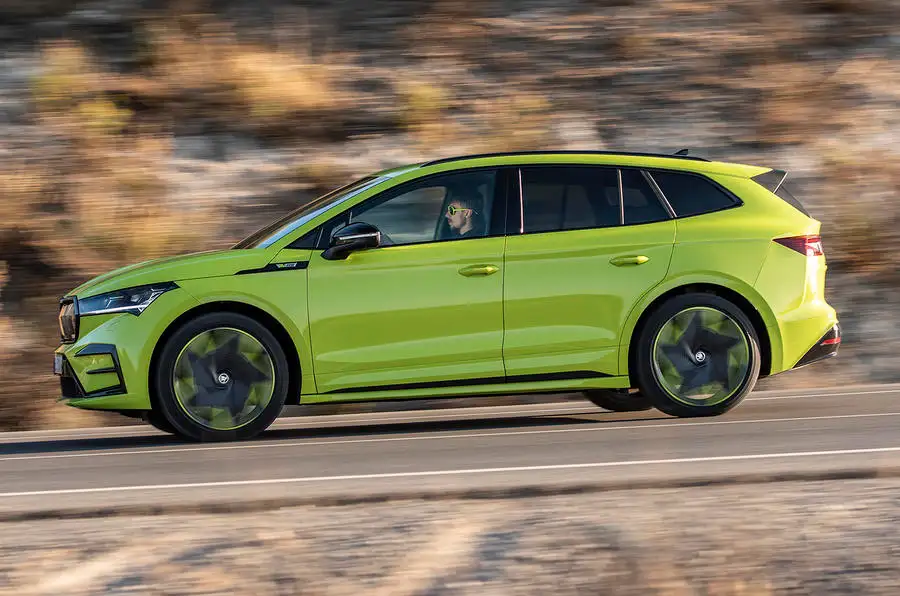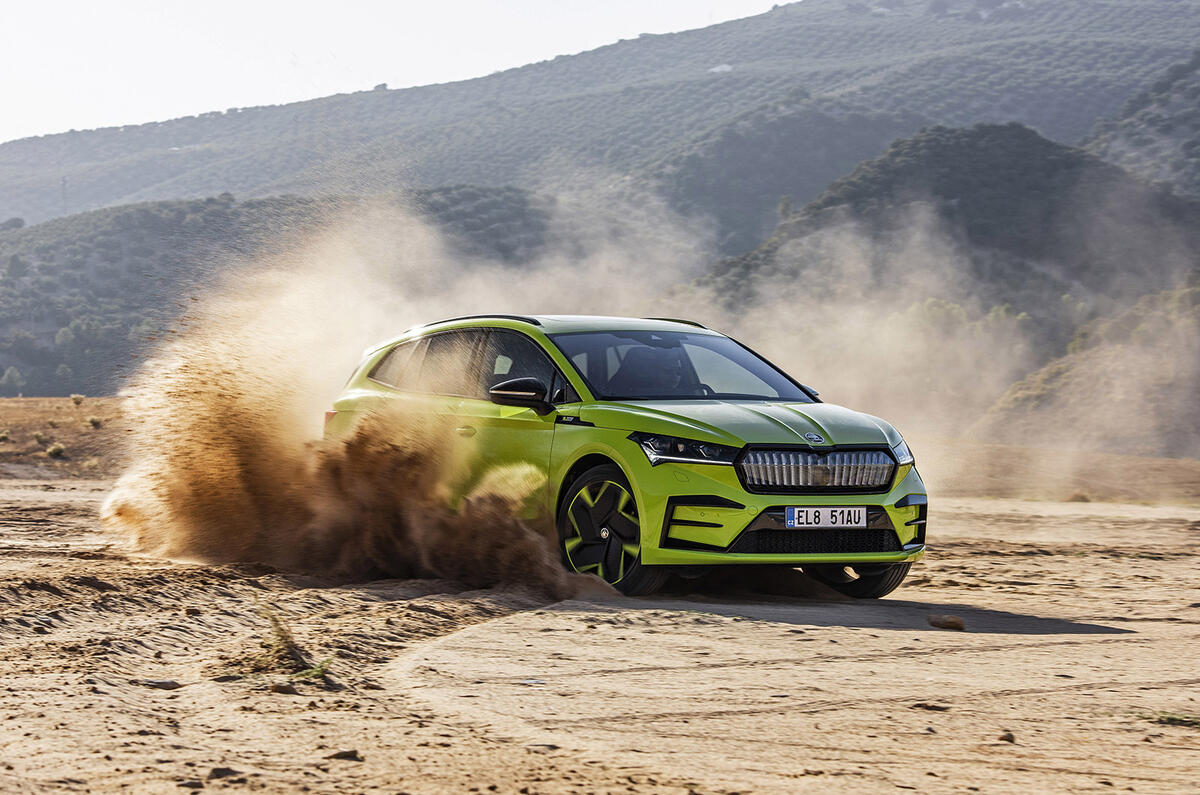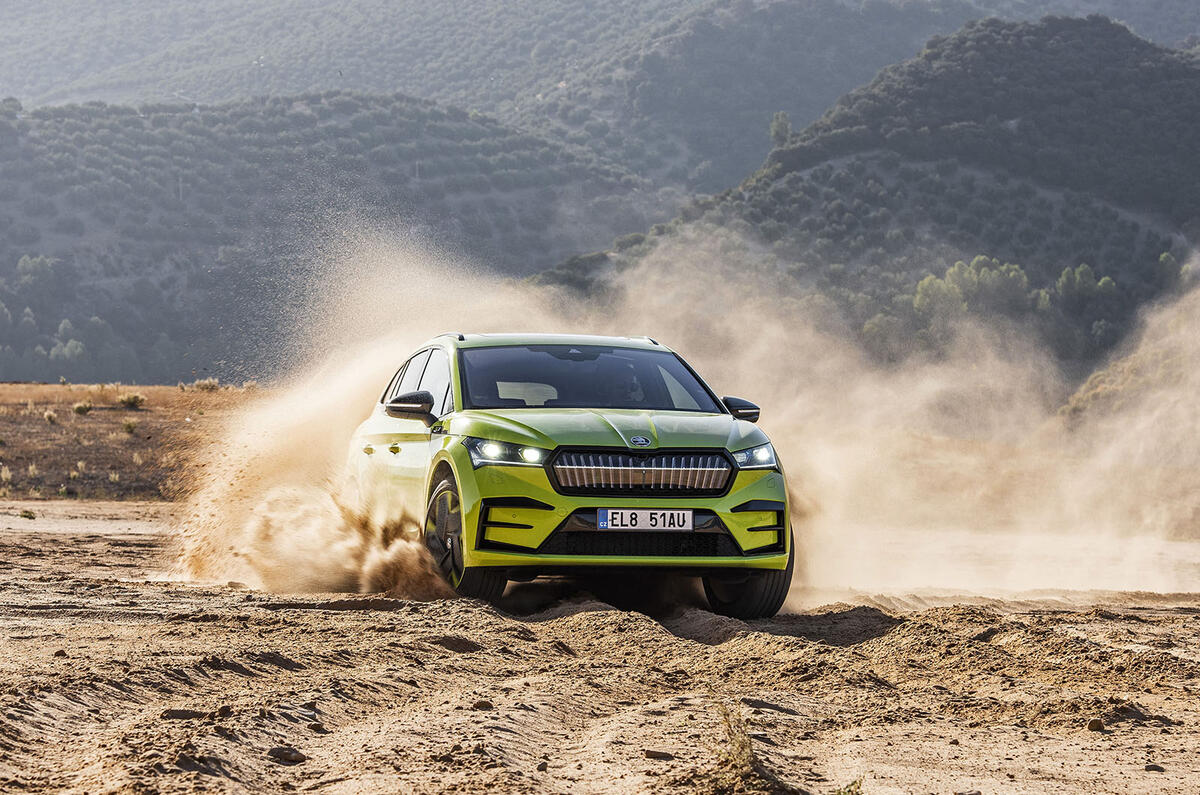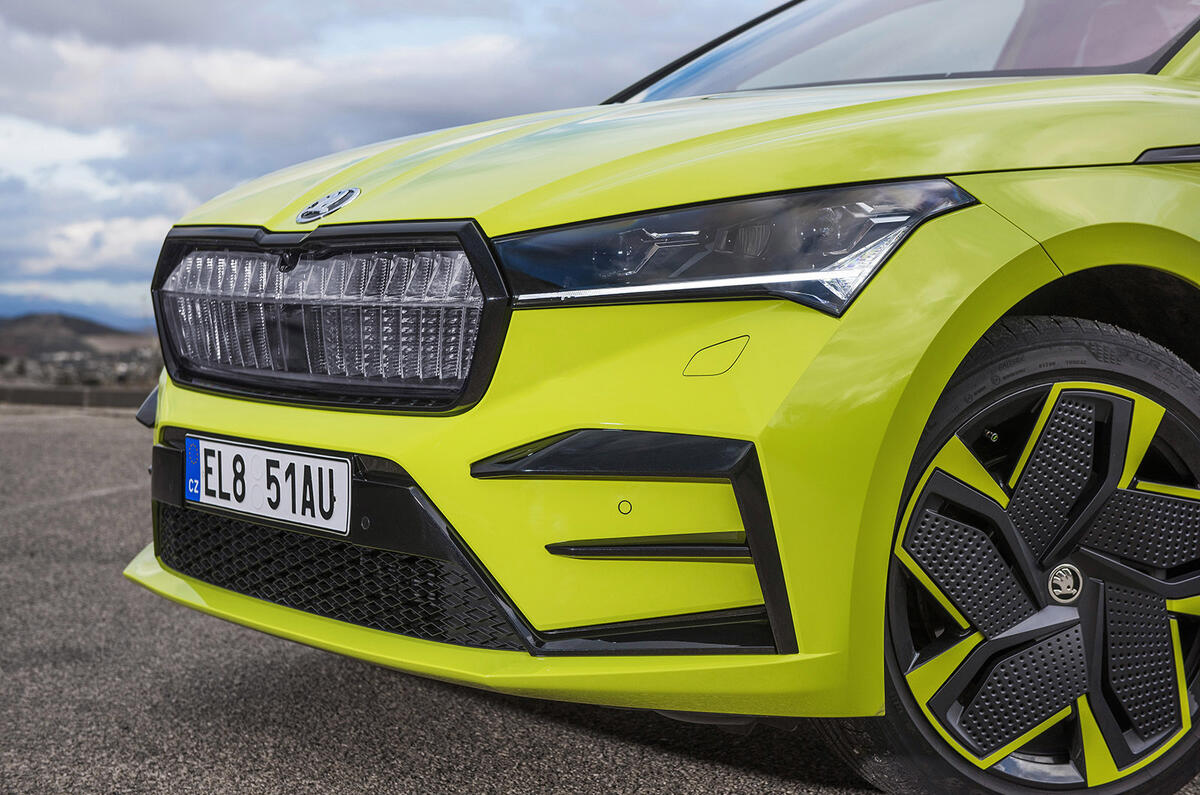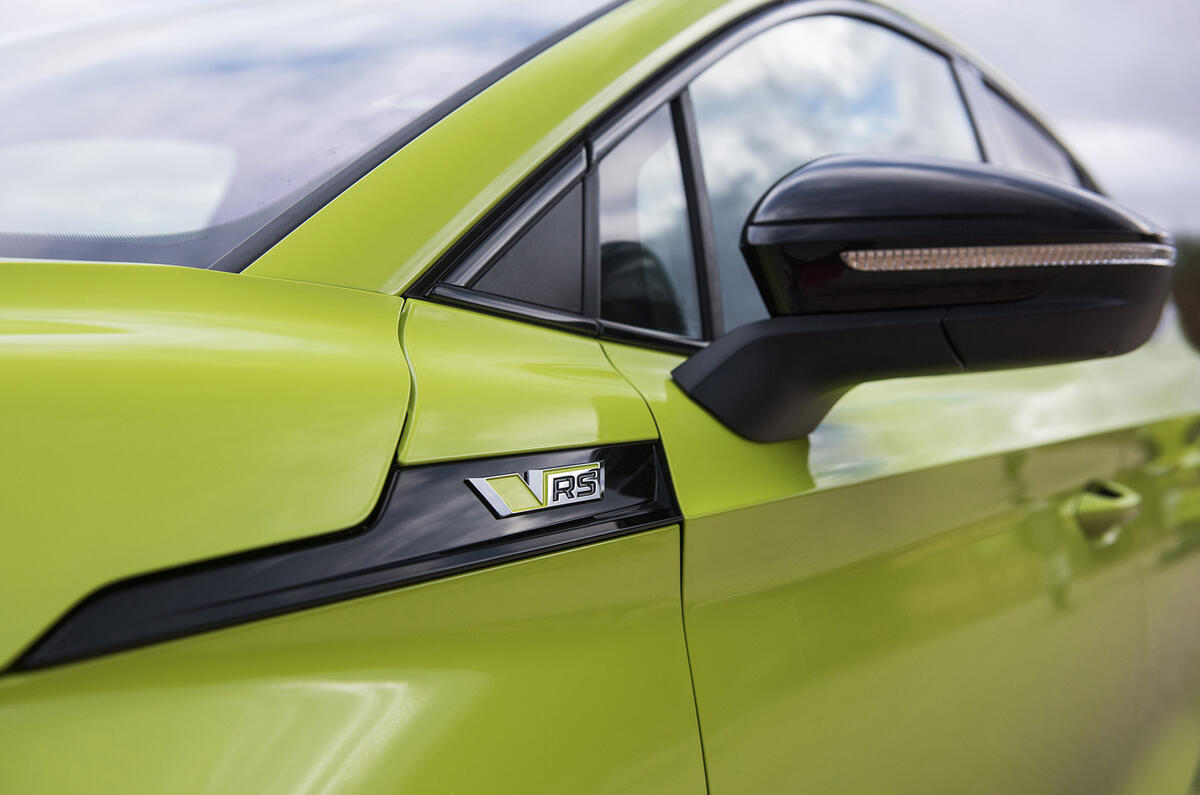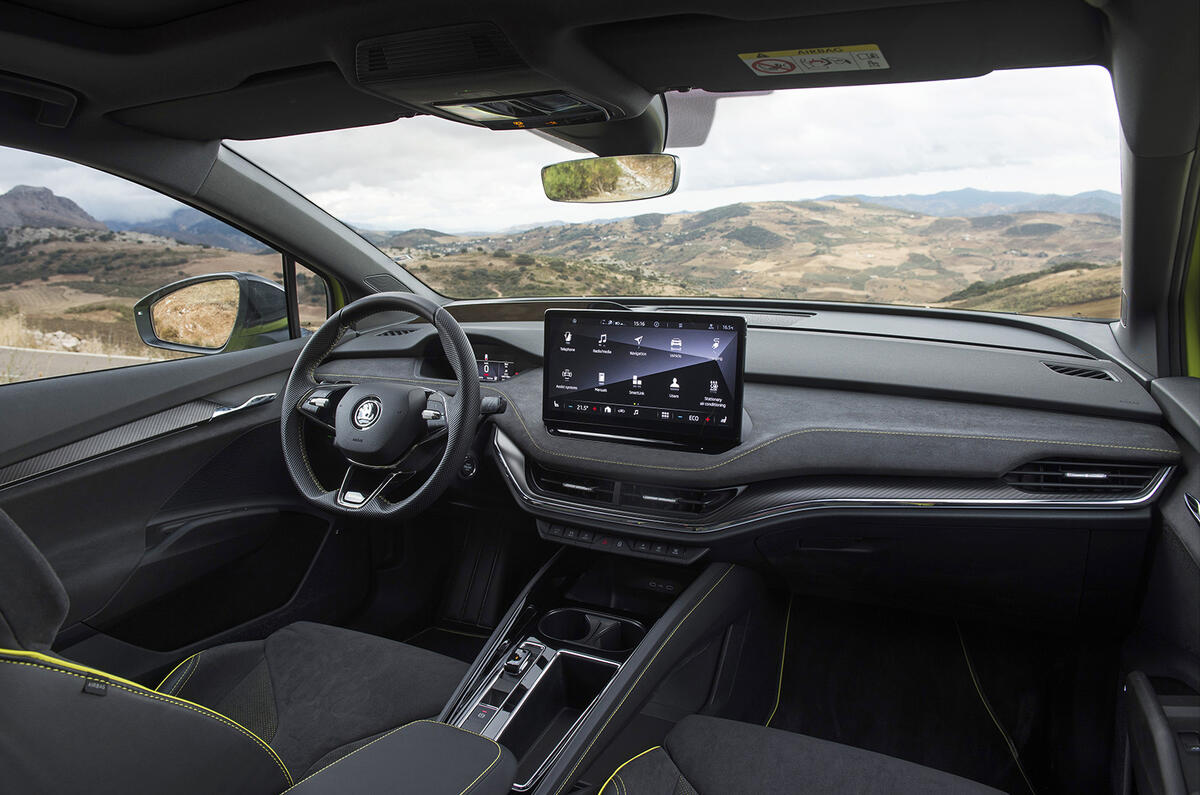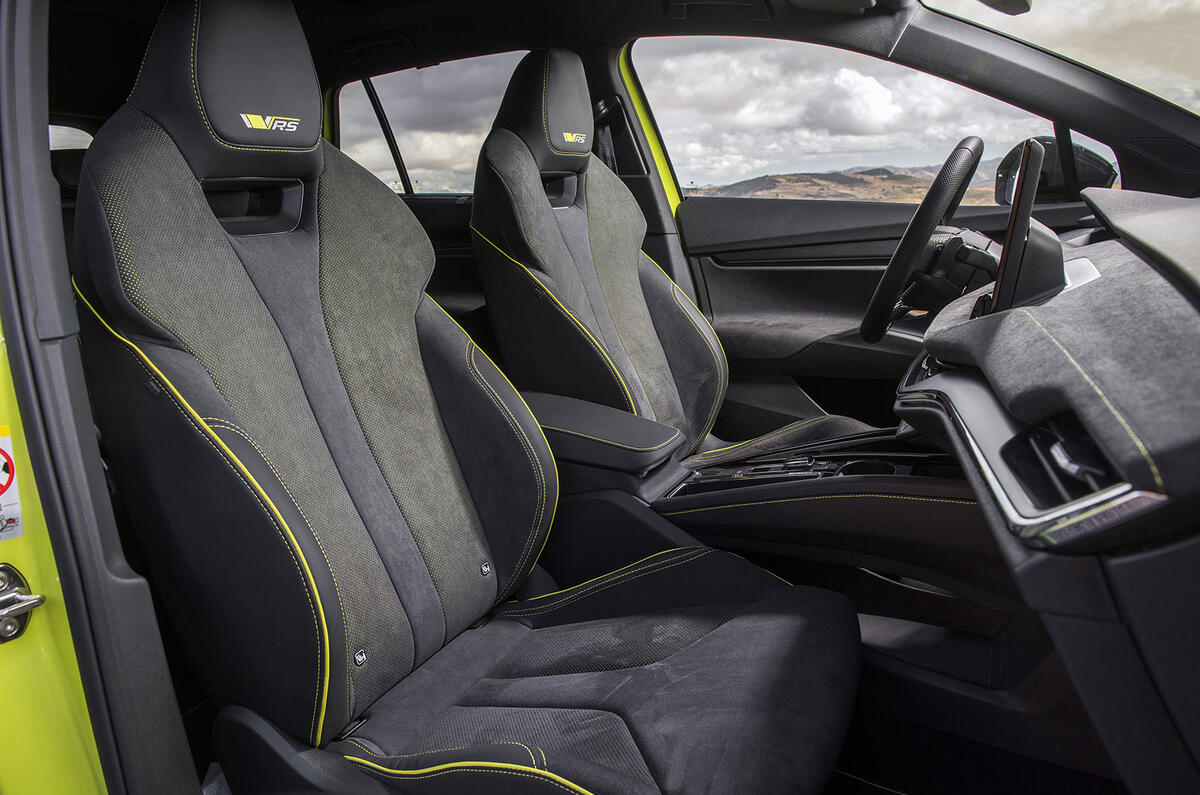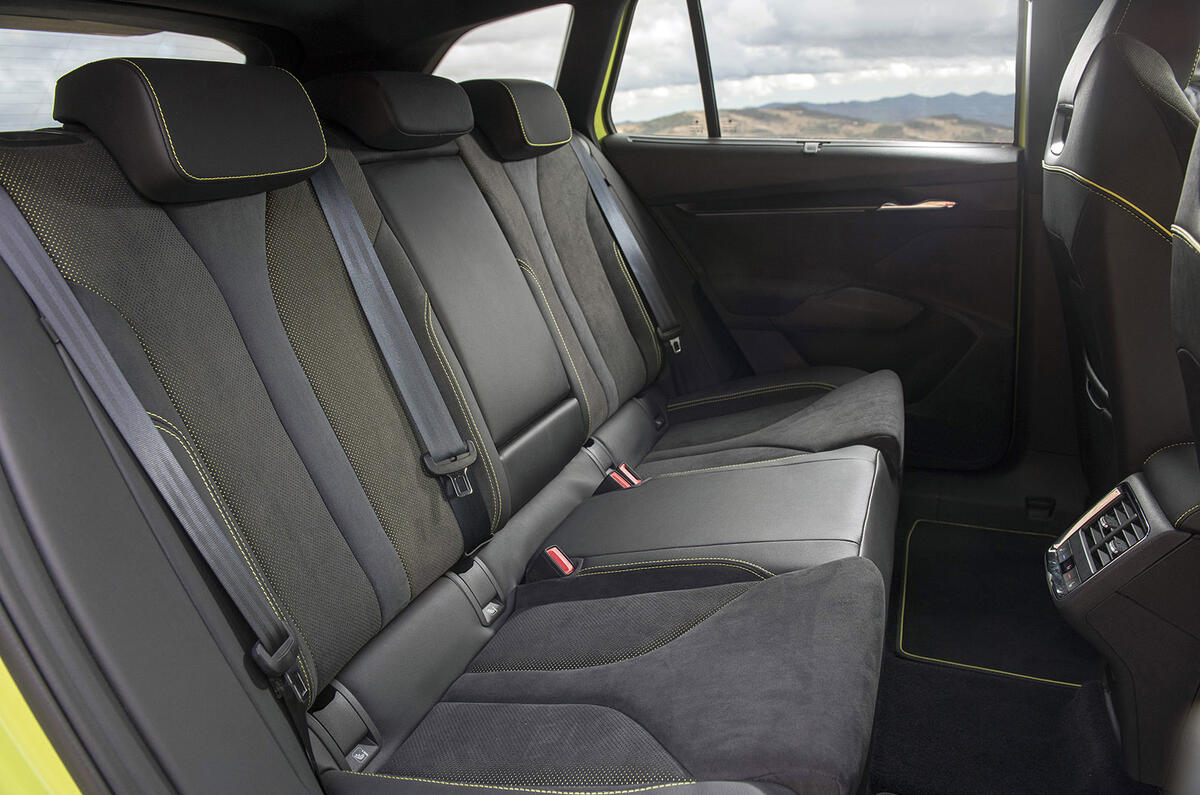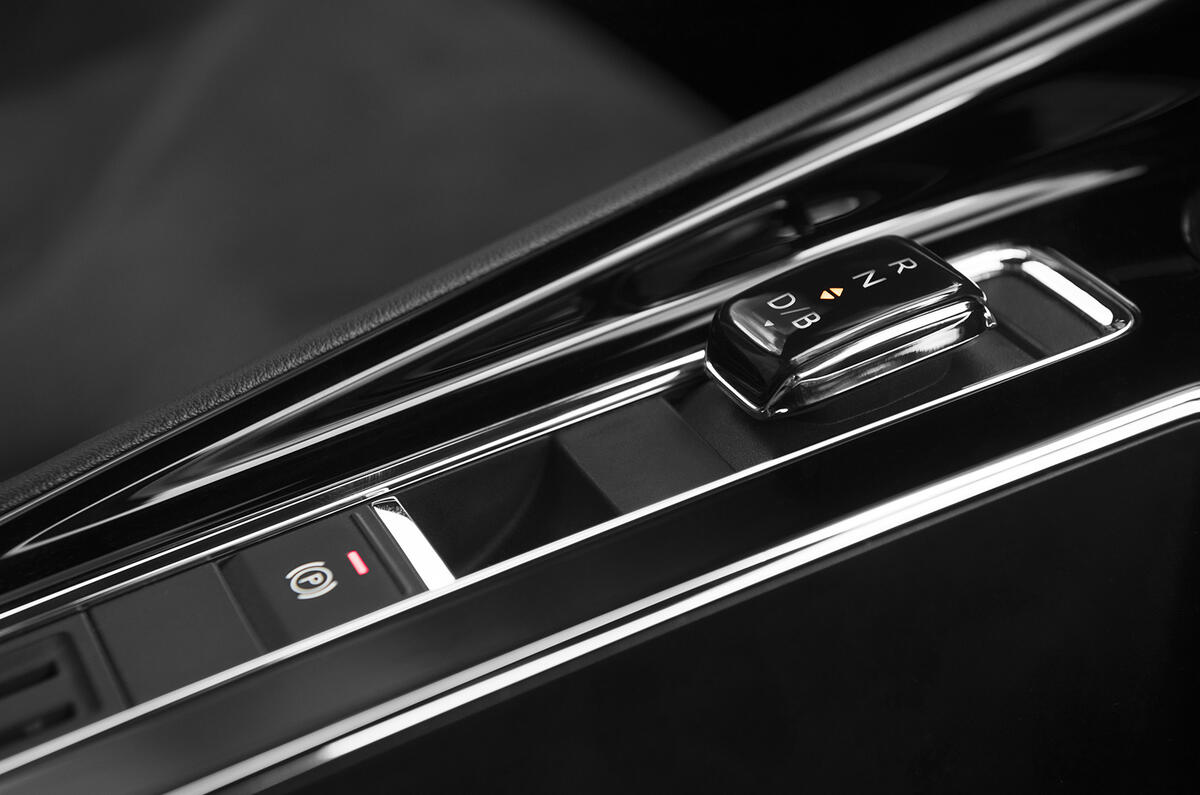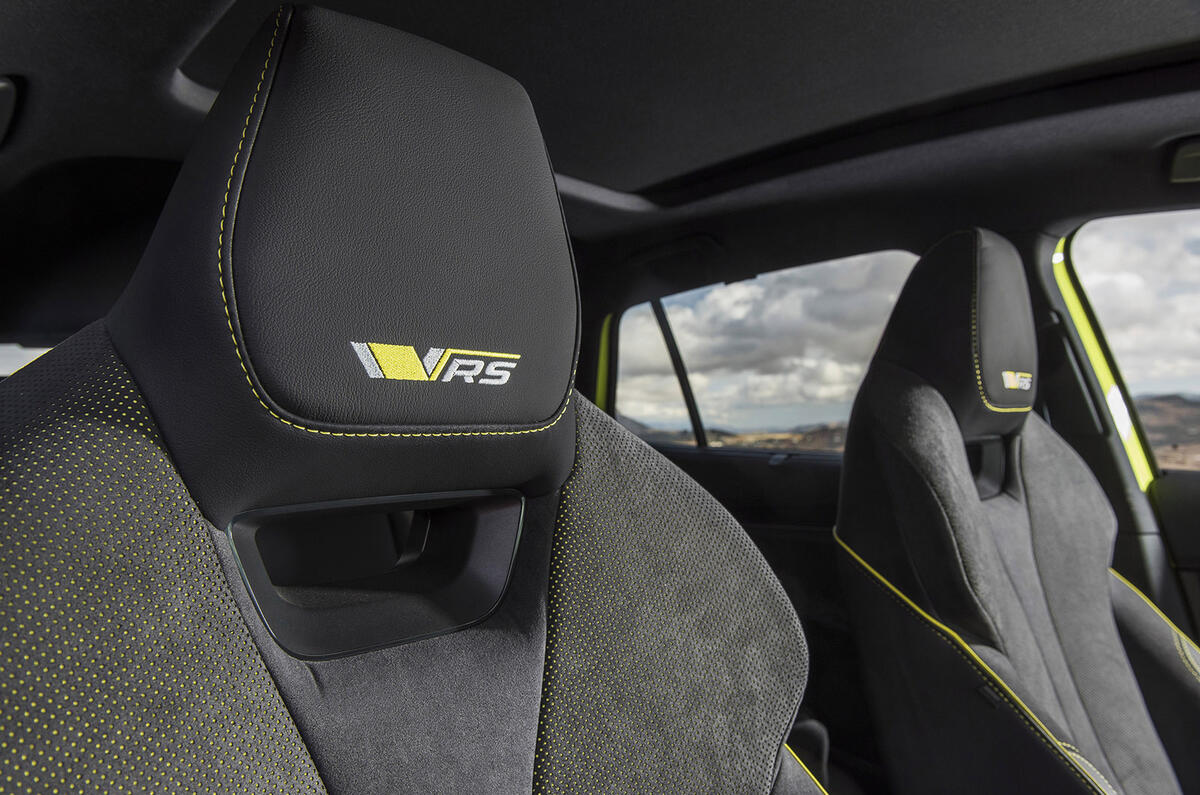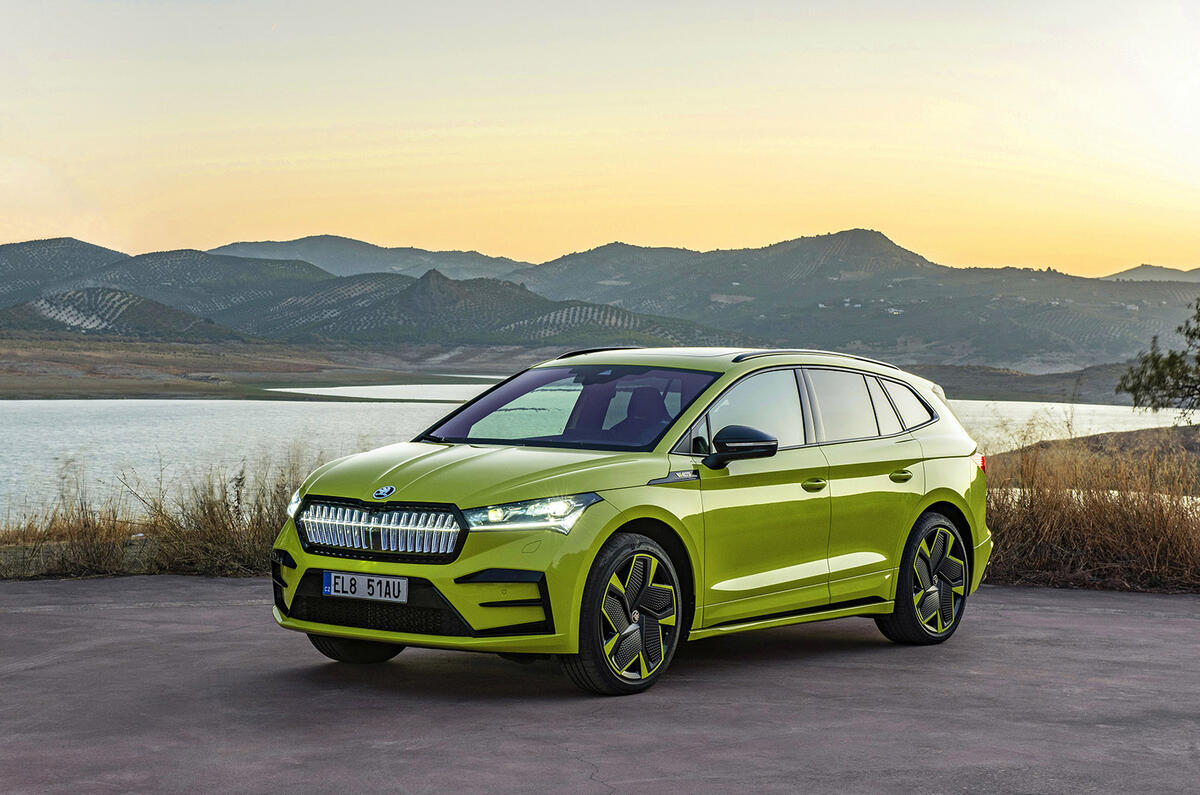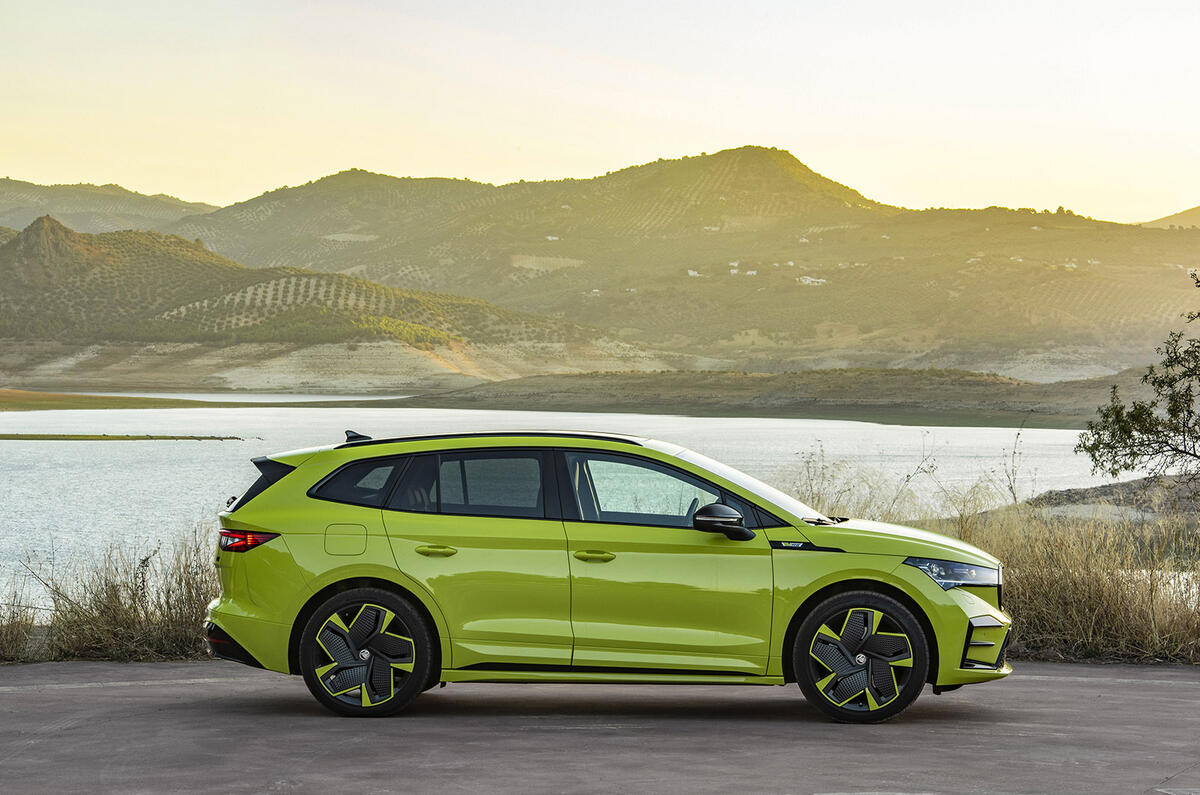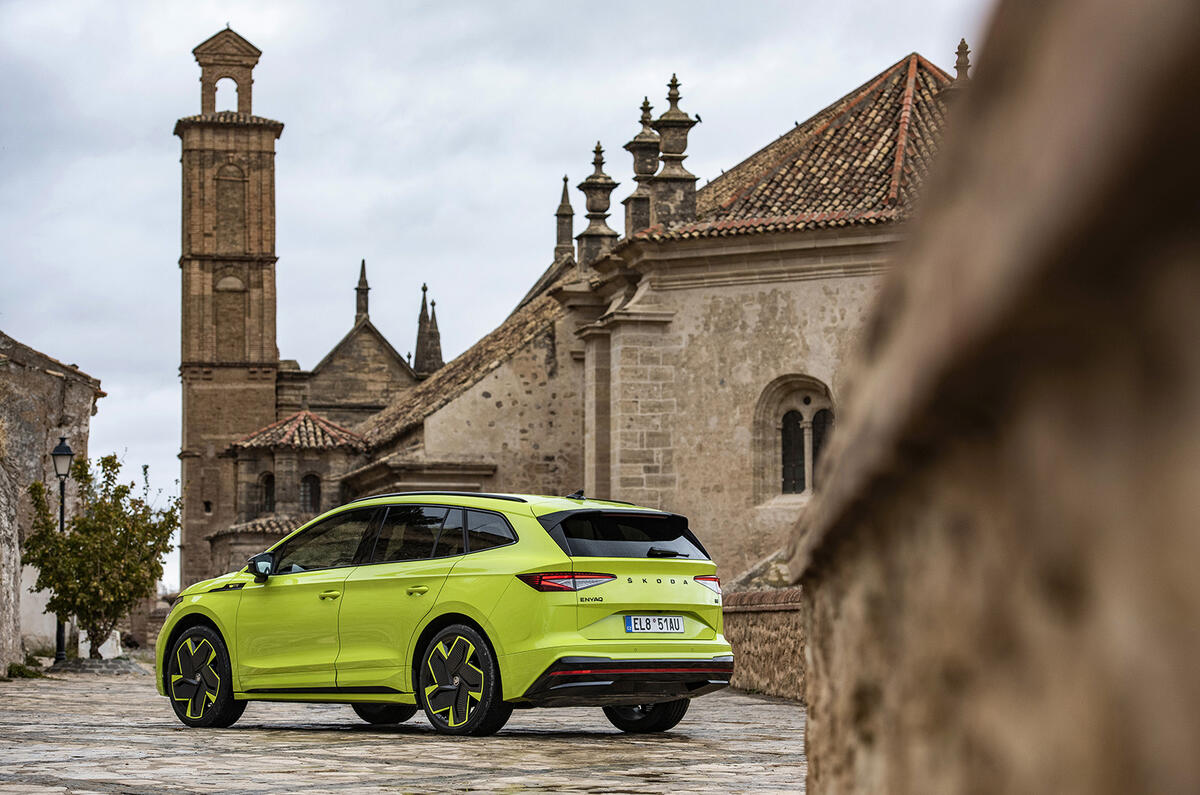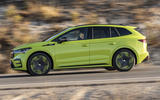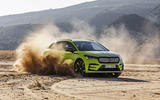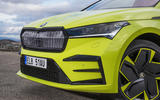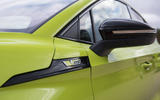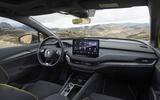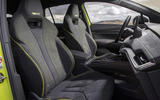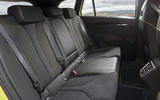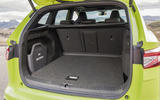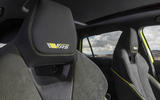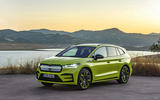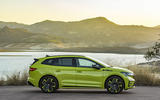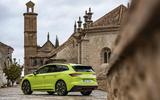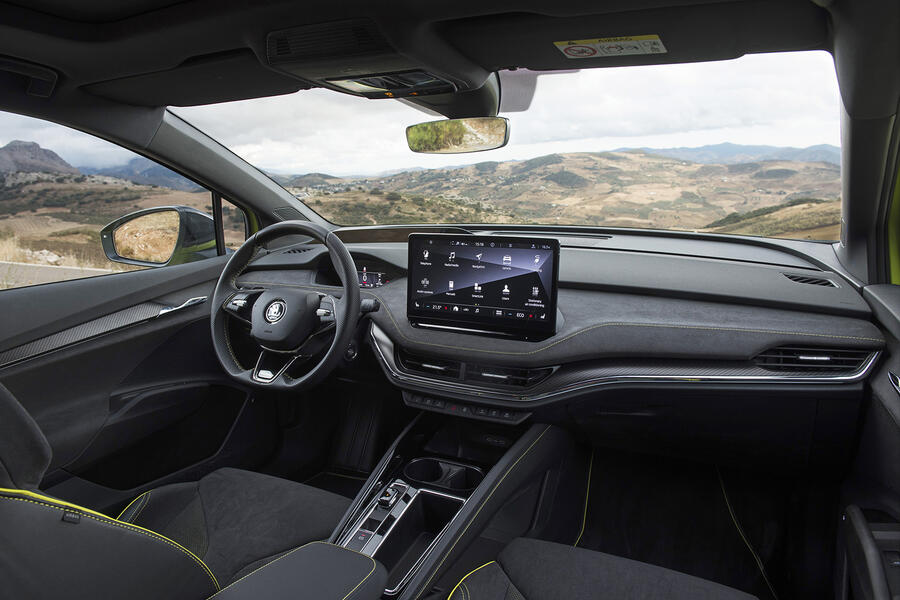Over the past decade or so, as EVs have become mainstream, we’ve observed manufacturers figuring various things out.
Brake pedal feel still isn’t perfect, but some are getting there. They’ve settled on one design of charging port and most of them have realised that we want to control the level of regenerative braking with paddles. One thing that’s still challenging, though, is adding value to the hot models. Cars like the Volkswagen ID 4 GTX may be faster than their basic brethren, but they don’t offer a dramatically different experience.
Speaking of that car, the new Skoda Enyaq iV vRS uses the same 77kWh (82kWh total) battery and dual motors (107bhp at the front and 188bhp at the rear) for 295bhp. There’s the same caveat, though: that total is available only for 30sec in a kind of overboost function, and if the battery charge is too low, you won’t get full power either.
The vRS rides 15mm lower at the front and 10mm lower at the back than the standard Skoda Enyaq and features progressive steering, 20in wheels and the light-up grille as standard. It comes with more safety and convenience kit too, but if you want adaptive dampers, 21in wheels, keyless entry or a head-up display, you still need to pay extra.
Inside is a three-spoke steering wheel, some carbonfibre trim and a choice of two Design Selections: Lounge brings Alcantara seats with nuclear-green accents, while Suite tones it down with black leather.


